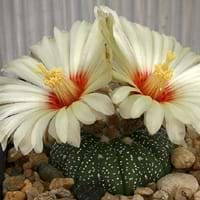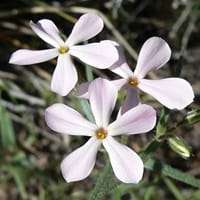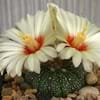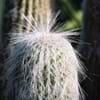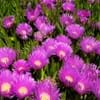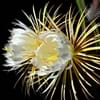Life Span
Perennial
Perennial
Type
Cactus, Flowering Plants
Flowering Plants
Origin
Mexico, Texas
California, Northwestern United States, United States
Types
Not Available
Not Available
Habitat
Desert, In desert grasslands, Rocky areas
Rich Woods
USDA Hardiness Zone
13-15
4-8
Sunset Zone
21,22,23,24
1a, 1b, 2a, 2b, 3a, 3b, 4, 5, 6, 7, 8, 9, 10, 11, 12, 13, 14, 15, 16, 17
Habit
Oval or Rounded
Mat-forming
Minimum Height
Not Available
Minimum Width
Not Available
Flower Color
Red, Yellow
Baby Pink, White
Flower Color Modifier
Not Available
Bicolor
Fruit Color
Green, Pale Pink
Not Available
Leaf Color in Spring
Not Available
Green
Leaf Color in Summer
Not Available
Green
Leaf Color in Fall
Not Available
Green
Leaf Color in Winter
Not Available
Not Available
Leaf Shape
Not Applicable
Ovate-lanceolate
Plant Season
Not Available
Spring
Sunlight
Not Available
Partial Sun, Partial shade
Growth Rate
Not Available
Fast
Type of Soil
Not Available
Loam
The pH of Soil
Not Available
Neutral
Soil Drainage
Not Available
Well drained
Bloom Time
Not Available
Spring
Repeat Bloomer
Not Available
No
Tolerances
Not Available
Not Available
Where to Plant?
Ground
Container
How to Plant?
Seedlings, Transplanting
Cuttings, Seedlings
Plant Maintenance
Medium
Medium
Watering Requirements
Needs very little water
Requires regular watering
In Summer
Lots of watering
Lots of watering
In Spring
Moderate
Moderate
In Winter
Average Water
Average Water
Soil pH
Not Available
Neutral
Soil Type
Not Available
Loam
Soil Drainage Capacity
Not Available
Well drained
Sun Exposure
Not Available
Partial Sun, Partial shade
Pruning
Remove damaged leaves, Remove dead branches, Remove dead leaves
Remove dead flowers
Fertilizers
All-Purpose Liquid Fertilizer
Apply 10-10-10 amount
Pests and Diseases
Dry root rot, Root mealy bugs
Leaf spot, Powdery mildew, Rust
Plant Tolerance
Drought
Drought
Flower Petal Number
Not Available
Single
Showy Fruit
Not Available
No
Edible Fruit
Not Available
No
Fragrant Flower
Not Available
Yes
Fragrant Fruit
Not Available
No
Fragrant Leaf
Not Available
No
Fragrant Bark/Stem
Not Available
No
Showy Foliage
Not Available
No
Showy Bark
Not Available
No
Foliage Texture
Bold
Medium
Foliage Sheen
Not Available
Matte
Invasive
Not Available
No
Self-Sowing
Not Available
Yes
Attracts
pollinators
Hummingbirds, Butterflies
Allergy
Not Available
Mild Allergen
Aesthetic Uses
Beautification, Showy Purposes
Ground Cover
Beauty Benefits
Not Available
Not Available
Environmental Uses
Air purification
Air purification
Medicinal Uses
Not Available
Boils, Eczema, Intestinal disorders
Part of Plant Used
Flowers
Flowers, Leaves, Root
Other Uses
Used as Ornamental plant
As a tea substitute, Used as eyewash
Used As Indoor Plant
Yes
No
Used As Outdoor Plant
Yes
Yes
Garden Design
Not Available
Mixed Border, Rock Garden / Wall, Wildflower
Botanical Name
Astrophytum asterias
Phlox stansburyi
Common Name
Star Cactus, Sand Dollar Cactus
Phlox stansbury
In Hindi
रेत डॉलर कैक्टस
Phlox stansbury
In German
Sand Dollar Cactus
Phlox stansbury
In French
Sand Dollar Cactus
Phlox stansbury
In Spanish
Sand Dollar Cactus
Phlox stansbury
In Greek
Sand Dollar Cactus
Phlox stansbury
In Portuguese
Cacto do dólar de areia
Phlox stansbury
In Polish
Sand Dollar Cactus
Phlox stansbury
In Latin
Sand Dollar Cactus
Phlox stansbury
Phylum
Magnoliophyta
Magnoliophyta
Class
Magnoliopsida
Magnoliopsida
Order
Caryophyllales
Solanales
Family
Cactaceae
Polemoniaceae
Clade
Angiosperms, Core eudicots, Eudicots
Angiosperms, Asterids, Eudicots
Subfamily
Cactoideae
Polemonioideae
Number of Species
Not Available
Difference Between Sand Dollar Cactus and Phlox stansbury
If you are confused whether Sand Dollar Cactus or Phlox stansbury are same, here are some features about those plants to help you choose better. Many people think that these two plants have the same characteristics, but one can see Sand Dollar Cactus and Phlox stansbury Information and learn more about it. Fertilizers required for proper growth of Sand Dollar Cactus are All-Purpose Liquid Fertilizer, whereas for Phlox stansbury fertilizers required are Apply 10-10-10 amount. Hence, one should know the basic difference between Sand Dollar Cactus and Phlox stansbury if you are planning to have them in your garden to enhance its beauty.
<
Flowering PlantsImportance of Sand Dollar Cactus and Phlox stansbury
Want to have the most appropriate plant for your garden? You might want to know the importance of Sand Dollar Cactus and Phlox stansbury. Basically, these two plants vary in many aspects. Compare Sand Dollar Cactus and Phlox stansbury as they differ in many characteristics such as their life, care, benefits, facts, etc. Every gardener must at least have the slightest clue about the plants he wants to plant in his garden. Compare their benefits, which differ in many ways like facts and uses. The medicinal use of Sand Dollar Cactus is Not Available whereas of Phlox stansbury is Boils, Eczema and Intestinal disorders. Sand Dollar Cactus has beauty benefits as follows: Not Available while Phlox stansbury has beauty benefits as follows: Not Available.
Compare Facts of Sand Dollar Cactus vs Phlox stansbury
How to choose the best garden plant for your garden depending upon its facts? Here garden plant comparison will help you to solve this query. Compare the facts of Sand Dollar Cactus vs Phlox stansbury and know which one to choose. As garden plants have benefits and other uses, allergy is also a major drawback of plants for some people. Allergic reactions of Sand Dollar Cactus are Not Available whereas of Phlox stansbury have Mild Allergen respectively. Having a fruit bearing plant in your garden can be a plus point of your garden. Sand Dollar Cactus has no showy fruits and Phlox stansbury has no showy fruits. Also Sand Dollar Cactus is flowering and Phlox stansbury is not flowering . You can compare Sand Dollar Cactus and Phlox stansbury facts and facts of other plants too.
